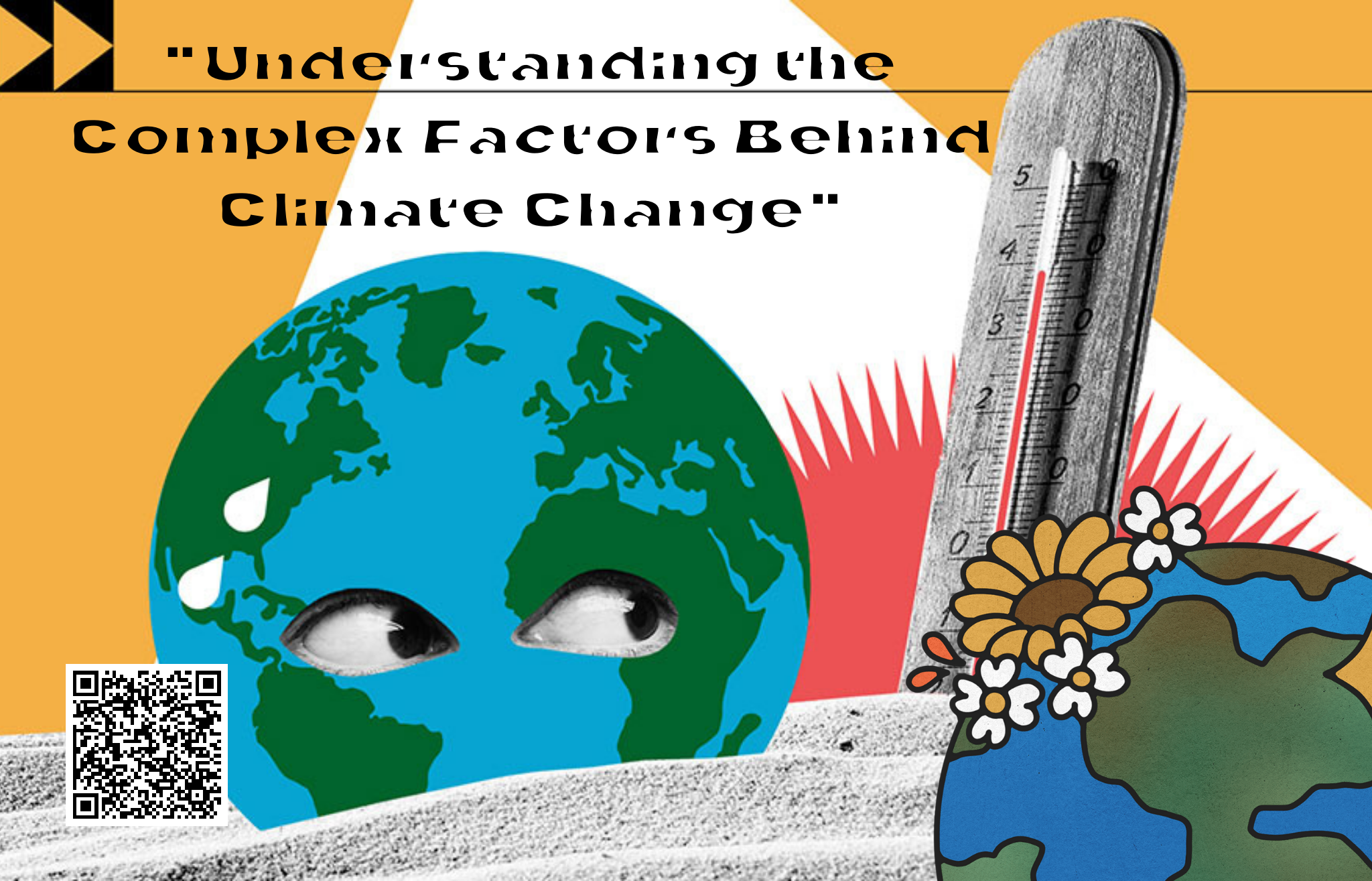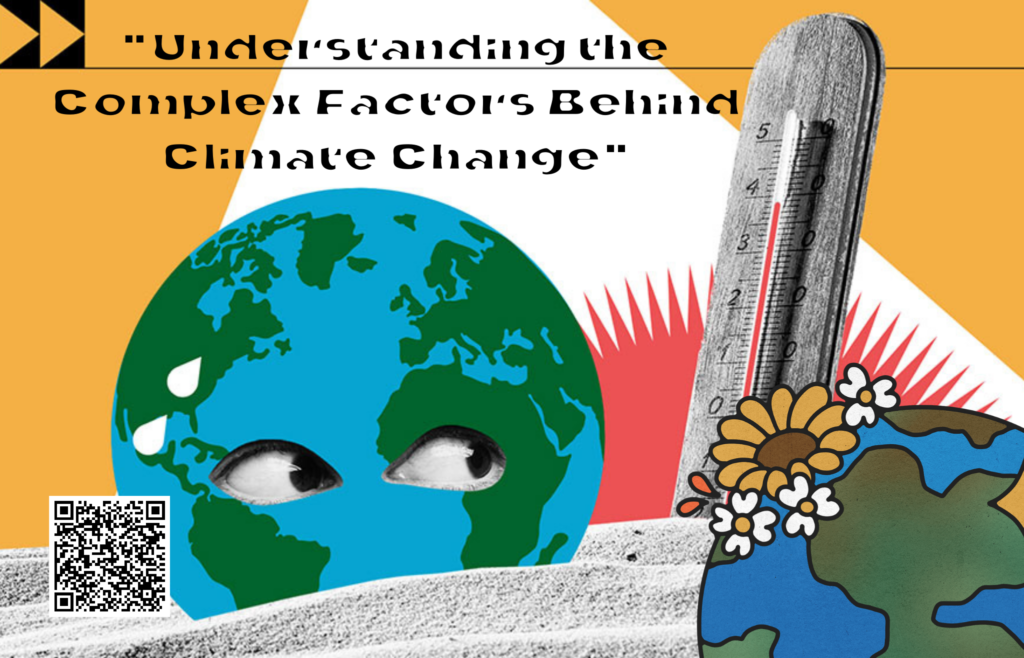Nature
“Understanding the Complex Factors Behind Climate Change”


Climate change is driven by a complex interplay of various factors. These factors can be broadly categorized into natural and human-induced factors.
EMPOWERING STRATEGIES FOR ECOLOGICAL BALANCE
Here are some of the key factors that contribute to climate change:
- Greenhouse Gas Emissions: Human activities, such as burning fossil fuels (coal, oil, and natural gas), deforestation, and industrial processes, release greenhouse gases like carbon dioxide (CO2), methane (CH4), and nitrous oxide (N2O) into the atmosphere. These gases trap heat and lead to a warming of the Earth’s surface.
- Deforestation: The cutting down of forests for various purposes, including agriculture and urban development, reduces the Earth’s ability to absorb carbon dioxide and contributes to higher levels of atmospheric CO2.
- Land Use Changes: Changes in land use, such as urbanization and agriculture, can alter the Earth’s surface characteristics, affecting the climate by changing the reflectivity (albedo) of the land and its ability to absorb and release heat.
- Agricultural Practices: Agriculture is a significant contributor to climate change through practices like livestock production (which produces methane), rice cultivation (which emits methane), and the use of synthetic fertilizers (which release nitrous oxide).
- Energy Production: The burning of fossil fuels for energy production, including electricity generation and transportation, is a major source of CO2 emissions.
- Industrial Processes: Certain industrial activities release greenhouse gases and other pollutants into the atmosphere, contributing to climate change. These processes include cement production and chemical manufacturing.
- Waste Generation: Landfills and waste incineration can produce methane and CO2 emissions, impacting the climate.
- Methane Emissions: Methane is a potent greenhouse gas, and its emissions come from various sources, including natural sources (such as wetlands) and human activities like agriculture, landfills, and the production and transport of natural gas and oil.
- Nitrous Oxide Emissions: “Natural factors, such as volcanic eruptions, solar variability, and natural variations in ocean currents and atmospheric patterns, can also exert influence on climate change.”
- Changes in Land and Water Use: Alterations in land cover and changes in water management practices, such as draining wetlands, can influence local and regional climates.
- Natural Factors: Natural factors, including volcanic eruptions, solar variability, and natural variations in ocean currents and atmospheric patterns, can also influence climate change.
- Feedback Mechanisms: Climate change can trigger feedback mechanisms, where warming or cooling trends intensify or reinforce themselves. For example, melting ice caps reduce the planet’s albedo, which accelerates further warming.
- Ocean Acidification: The absorption of excess CO2 by the world’s oceans is causing ocean acidification, which can harm marine ecosystems and disrupt the carbon cycle.
- Feedback Loops: Climate systems can exhibit positive feedback loops, where an initial change leads to further amplification of that change. For example, as the Arctic ice melts due to warming temperatures, the reduced ice cover reflects less sunlight and absorbs more heat, further accelerating warming in the region.
- Black Carbon (Soot): Black carbon, or soot, is produced by incomplete combustion of fossil fuels and biomass. It can settle on ice and snow, reducing their albedo and causing them to absorb more heat, accelerating the melting of glaciers and ice caps.
- Aerosols: Atmospheric aerosols, such as sulfate particles from industrial processes and volcanic eruptions, can have both warming and cooling effects on the climate, depending on their composition and location.
- Land-Atmosphere Interactions: Changes in land cover, particularly urbanization, can lead to localized warming (urban heat island effect) and alter local weather patterns.
- Ocean Currents: Changes in ocean circulation patterns can influence regional climates and affect heat distribution around the globe. For example, disruptions in the North Atlantic Meridional Overturning Circulation (AMOC) can have far-reaching impacts on weather and climate.
- Natural Climate Variability: Natural climate phenomena, like El Niño and La Niña events, have significant short-term impacts on weather patterns, including droughts and floods. They interact with longer-term climate change, leading to increased complexity in weather and climate systems.
- Permafrost Thaw: The thawing of permafrost in polar regions releases stored carbon and methane, which can contribute to greenhouse gas emissions and exacerbate warming.
- Population Growth and Urbanization: The growth of human populations and urbanization drive increased energy consumption, transportation needs, and land use changes, all of which contribute to greenhouse gas emissions.
- Technological Advancements: Advances in technology can both contribute to climate change (e.g., through increased energy consumption) and help mitigate it (e.g., through renewable energy sources and energy-efficient technologies).
- International Trade: Global supply chains and international trade can lead to emissions associated with the production and transportation of goods and services across the world.
- Political and Economic Factors: National and international policies, regulations, and economic incentives play a significant role in influencing the rate and direction of climate change mitigation efforts.
Preserving Vision: Avoiding Common Habits and Factors That Damage Your Eyes
Understanding that climate change impacts are interconnected and can have far-reaching consequences on ecosystems, economies, and human societies is essential. Addressing climate change involves a multifaceted approach, including reducing greenhouse gas emissions, adapting to its effects, and promoting sustainable practices and policies to protect the environment and future generations.

Pingback: "Understanding the Complex Factors Behind ...